Posted by AnnSmarty
The golden rule of marketing has always been: Don’t leave your customer wondering, or you’ll lose them. This rule also applies very well to SEO: Unless Google can find an answer — and quickly — they’ll pick and feature your competitor.
One way to make sure that doesn’t happen is having a well set-up, well-optimized FAQ page. Your FAQ is the key to providing your customers and search engines with all the answers they might need about your brand.
Why create an FAQ page?
- Decrease your customer support team’s workload. If you do it right, your FAQ page will be the first point of contact for your potential customers — before they need to contact you directly.
- Shorten your customers’ buying journeys. If your site users can find all the answers without having to hear back from your team, they’ll buy right away.
- Build trust signals. Covering your return policies, shipping processes, and being transparent with your site users will encourage them to put more trust into your brand. As always, if your site users trust your brand, so will Google.
- Create a more effective sales funnel by including your business’s competitive advantages: What makes you better than your competitors?
- Improve your site internal linking (meaningfully).
- Capture more search visibility opportunities.
Feeling convinced? Then let’s move on from whys to hows.
Where to find questions to answer
I did a very detailed article on question research for Moz. It lists all kinds of tools — including SEO-driven (based on which question people type in Google’s search box) and People-Also-Ask-based (questions showing up in Google’s People Also Ask boxes) — that collect questions from online discussion boards, as well as tools that monitor Twitter and Reddit questions.
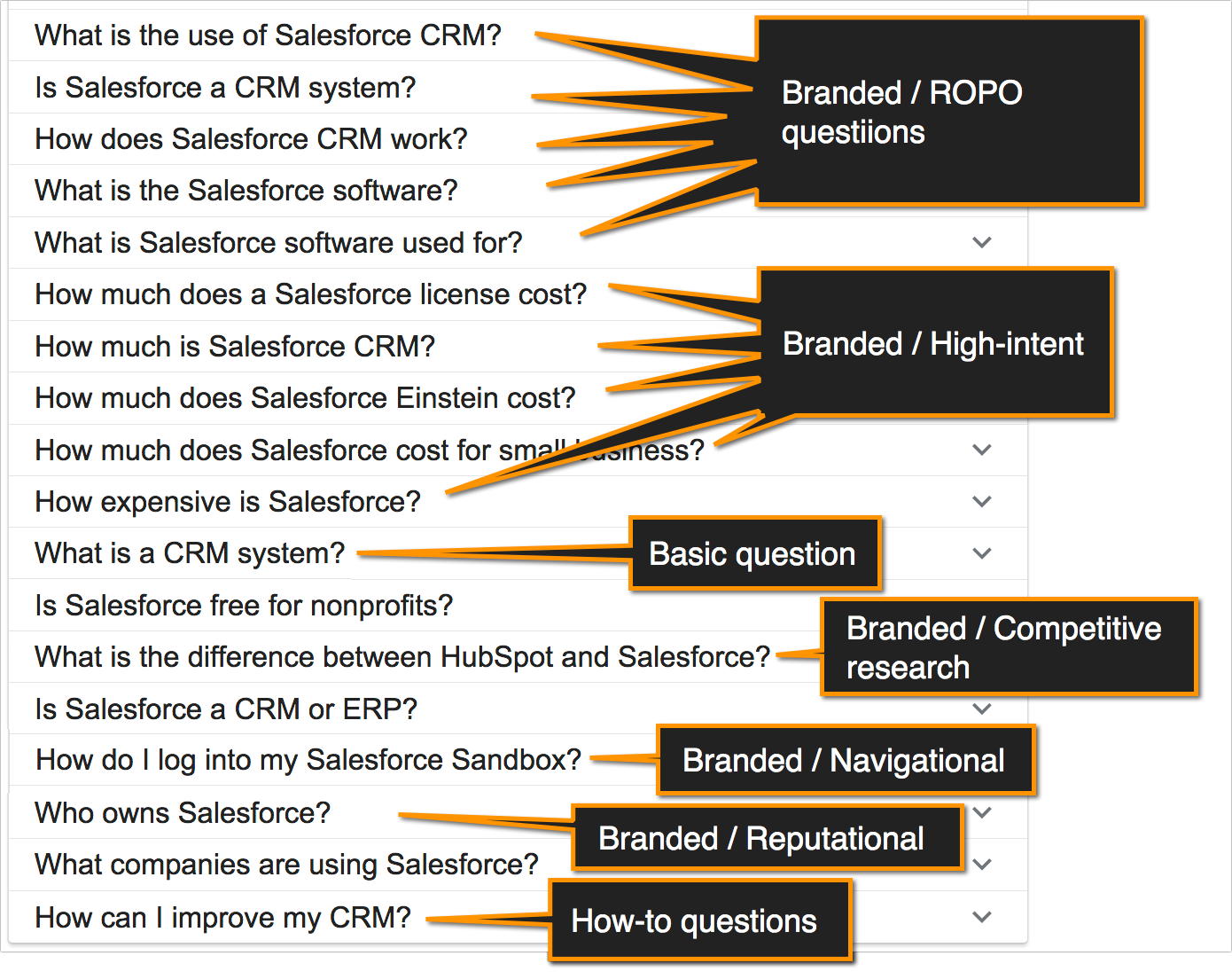
In addition, your customer support team is your most important resource. You need to know exactly what your customers are asking when they contact your company, and then use all the other sources to optimize those questions for organic rankings and expand your list where necessary.
Answers should be CCF (clear, concise, and factual)
(I have just made up this abbreviation, but it does a good job getting my point across.)
A good rule of thumb is to write short answers to each question — two to three paragraphs would make a good answer. If you go longer, the page will be too long and cluttered.
If you have more to say:
- Write a standalone article explaining the process
- Add a video
Creating a video to answer most of those questions is almost always a good idea. Videos make good promotional assets allowing your brand to be discovered on Youtube, as well as through Google’s video carousels.
And if video marketing seems too intimidating to you, there are quite a few tools that allow you to create videos on a budget without investing in expensive software (and training) or external services. I list some of those tools here.
Another video creation tool I discovered recently is called Renderforest. It offers some powerful explainer video templates that are perfect for answering questions.
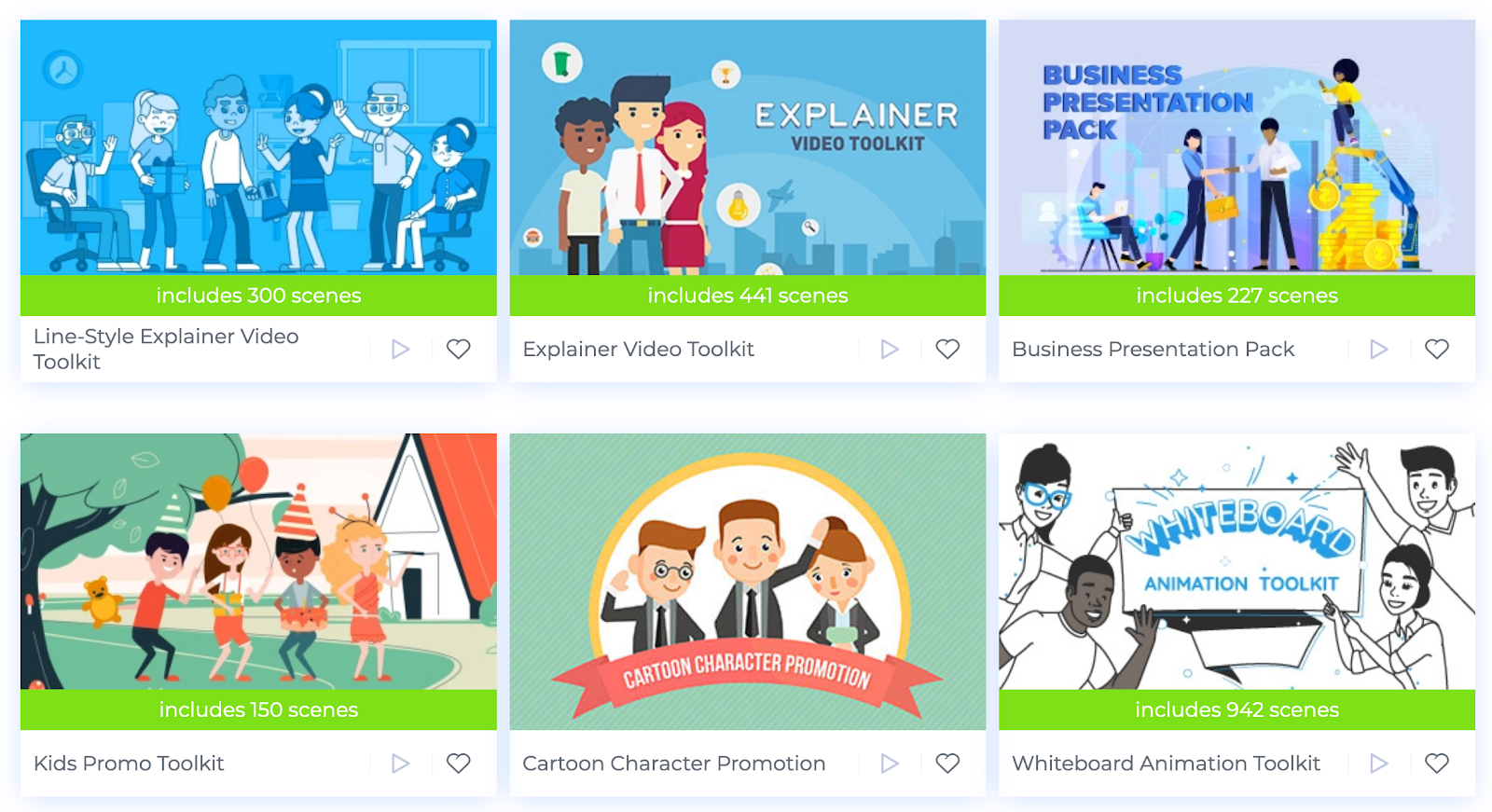
Other ways to make answers shorter are:
- Add intructural GIFs (I listed a few GIF creation tools here).
- Create downloadable flowcharts and checklists (there are lots of online tools to put those together).
Overall, visuals have long been proven to improve engagement and make things easier to understand and remember, so why not use them on your FAQ page?
FAQ schema — use it!
Google loves featuring clear answers (which is also why creating a solid FAQ page is such a good idea). In fact, Google loves answers so much that there’s a separate schema type specifically for this content format: FAQPage schema.
By all means, use it. For WordPress users, there’s a WordPress plugin that helps markup content with FAQ schema.
It makes your FAQ page easier to understand for Google, and it helps your page stand out in search:
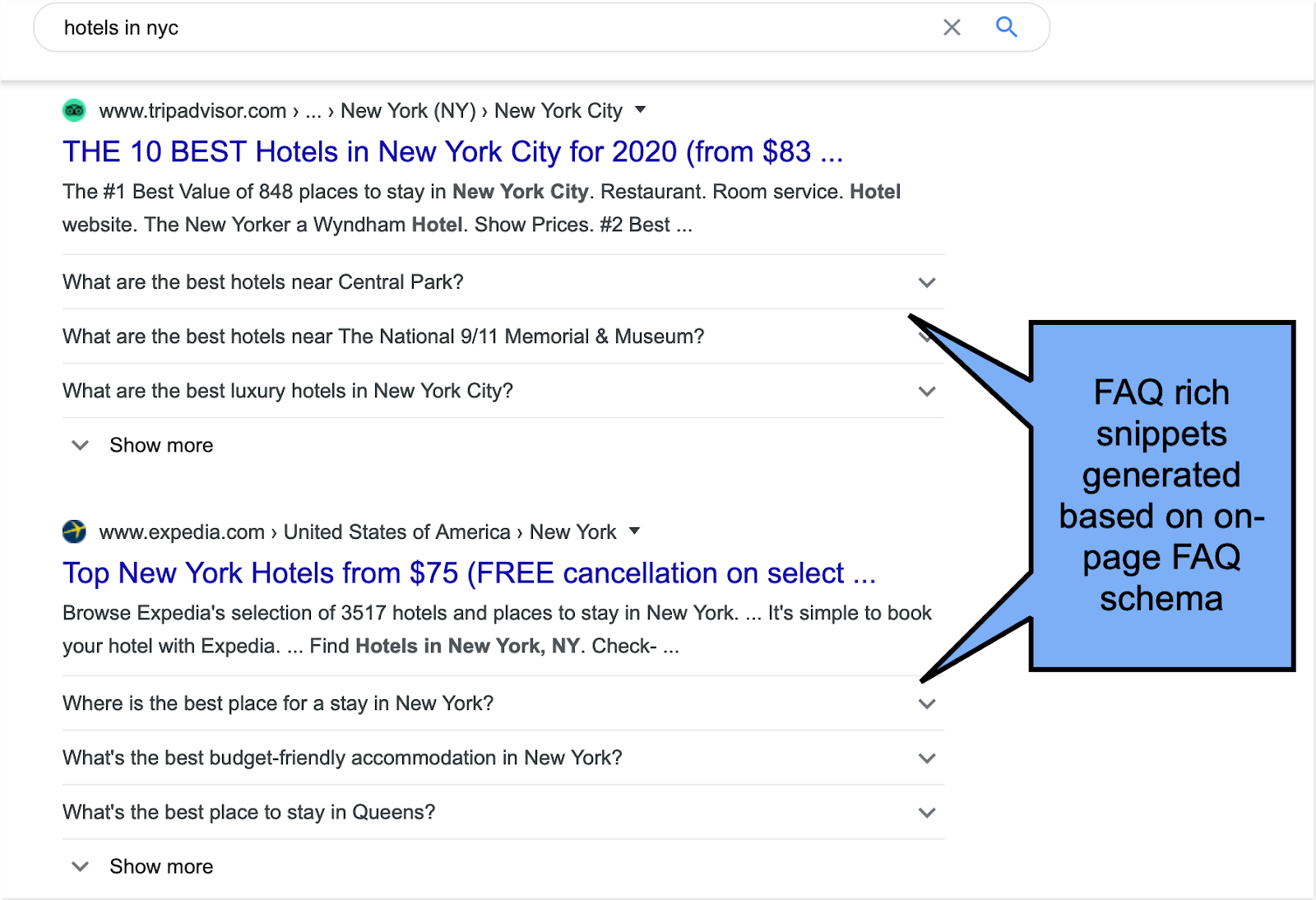
Quick tip: If you include an internal link inside your answer, it will populate in search results, too. More links in organic SERPs!
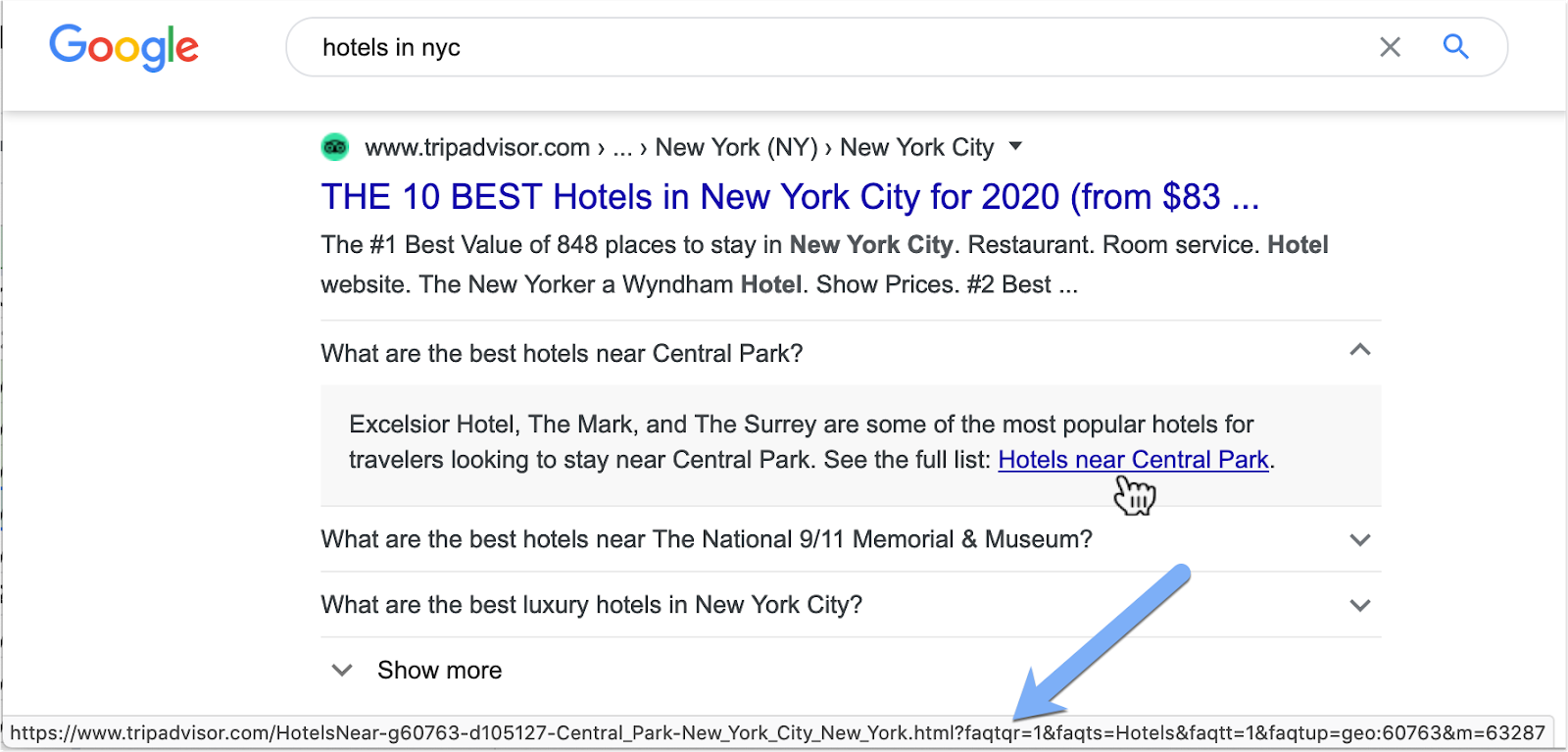
Internal linking: Use your FAQ as a sitemap
More links from your organic listing in search isn’t the only reason to link from your FAQ page. Your FAQ page is part of the customer journey, where each answer is an important step down the sales funnel. This is why adding internal links is key to ensuring that customer journey is continued.
But don’t think about these links from an SEO standpoint only. It’s not as important to create keyword-optimized link text here (although it’s still not a terrible idea — when it makes sense). The more important factor to think about here is user intent.
What is your site user likely to do next when they’re searching for a particular question?
If they have a question about your shipping costs, they’re probably close to buying, but need to know more about the final price. This is where you can brag about your awesome shipping partners and link straight to the product page (or list), as well as to the cart for them to complete the payment.
If they are asking how long shipping usually takes, they’re likely to be your current customer, so linking to your shipping info page would be more helpful.
Monitoring your FAQ page and user paths through it will give you more ideas on how to set up each answer better. More on this below.
If you need some inspiration on proper in-FAQ linking, check out Shopify, which does a pretty awesome job on matching various user intents via internal linking:
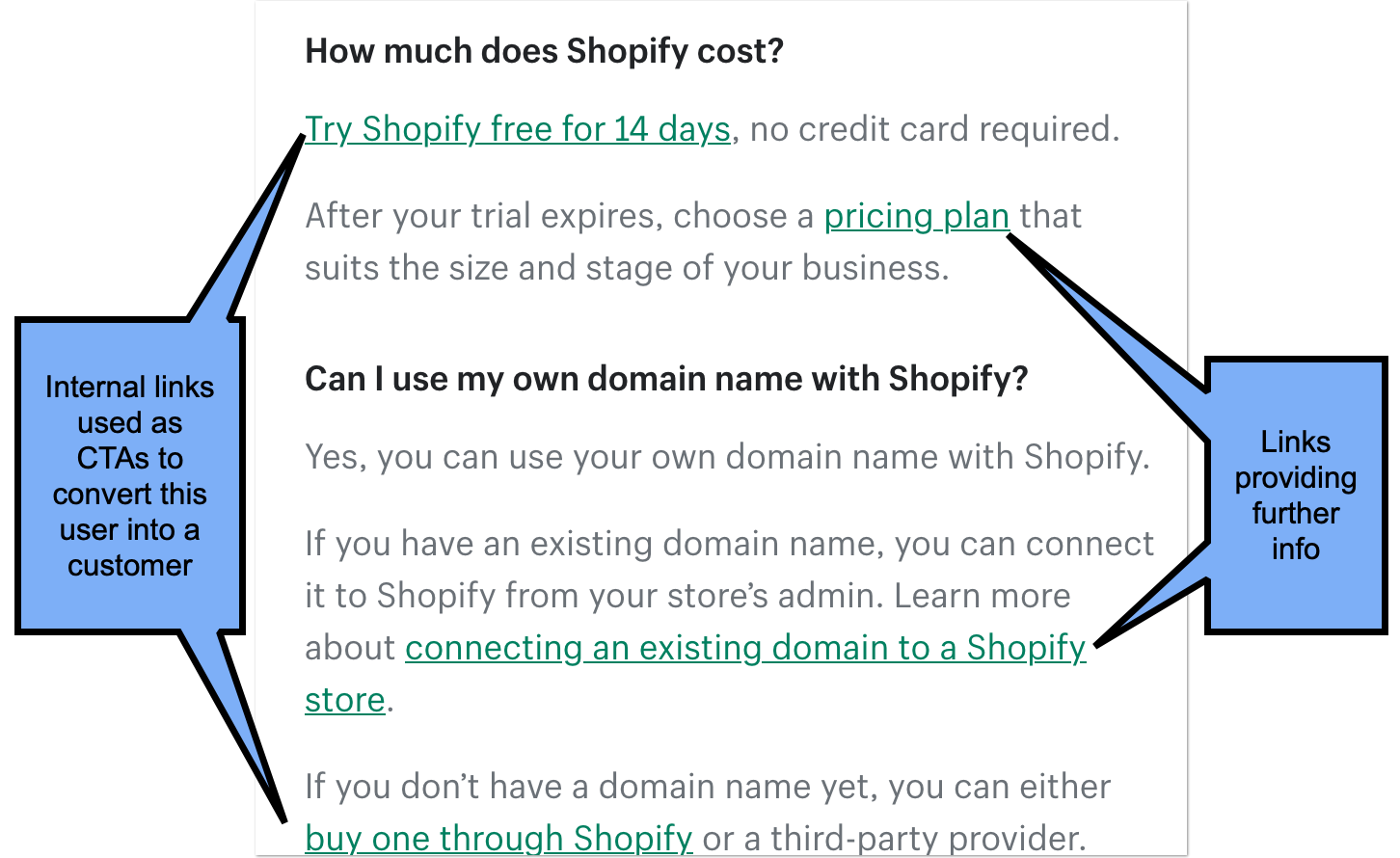
Structure is everything
There are web users who search and then there are those who browse.
Your FAQ page should accommodate both.
This means:
- There should be search field suggestions to guide the user through the site effectively.
- There should be clear categories (as subheads) for the page visitors to browse through and get a good idea of what your site does at a glance. This will help people who are still at the research phase make a buying decision faster.
PayPal accomplishes both of these in a very nice way:
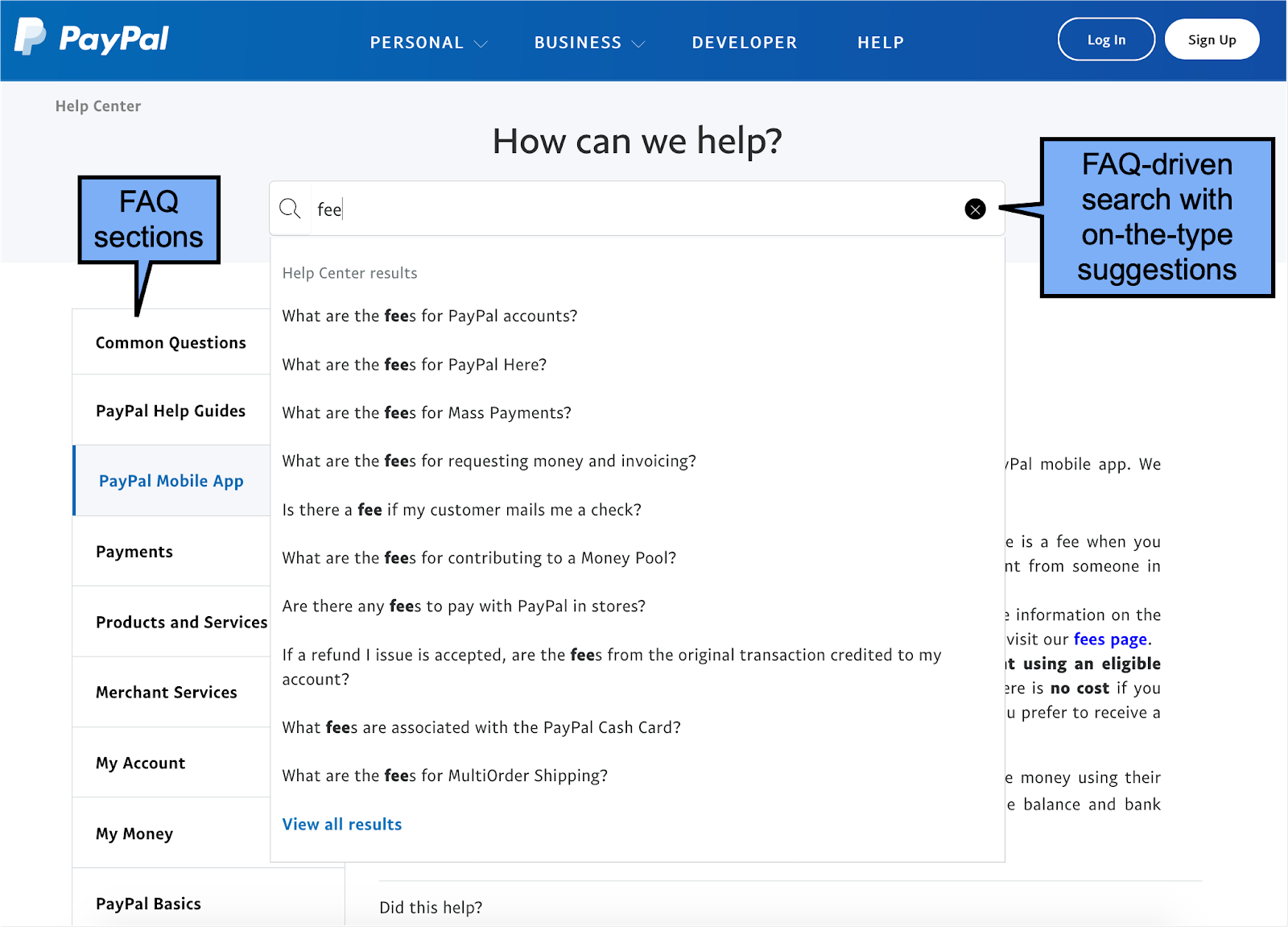
To determine the best structure for the FAQ page, try Text Optimizer, which uses semantic analysis to come up with related questions. It makes catching some common keyword and question patterns easier:

When you have your FAQ content structure set up, create anchor links to allow users to quickly jump to the section they feel like browsing more. To see this on-page navigation in action, head to the Adobe FAQ page:

Here’s a quick tutorial on how to set up this kind of navigation.
Making your FAQ page work: integrate, analyze, monitor
A well set-up FAQ page addresses multiple types of user intent and helps at various steps in a sales funnel. This makes monitoring the page closely a very essential task.
Here are a few ways to accomplish it:
1. Monitor in-FAQ search
If your site runs on WordPress, there’s a variety of FAQ plugins (including this one) that come with advanced search functionality. The feature reports on:
- Most popular searches, showing which product features or site sections cause the most confusion (these may signal some usability issues).
- Empty searches, showing which users’ questions triggered no answers in your FAQ (these should go straight to your content team).
If you’re going with a no-plugin, custom solution, make sure to use Google Analytics to set up your in-FAQ search, which will allow you to monitor your site users’ searching patterns.
2. Track user paths through your FAQ page
Which pages (or off-site channels) tend to bring people to your FAQ page, and where do they usually go from there? These paths are important in understanding the role of the FAQ page in your sales funnel.
To track any page effectiveness in sending conversions, I tend to use Finteza, which allows you to create an unlimited number (unless I haven’t hit the limit yet) of sales funnels to monitor and compare different user paths through your site:
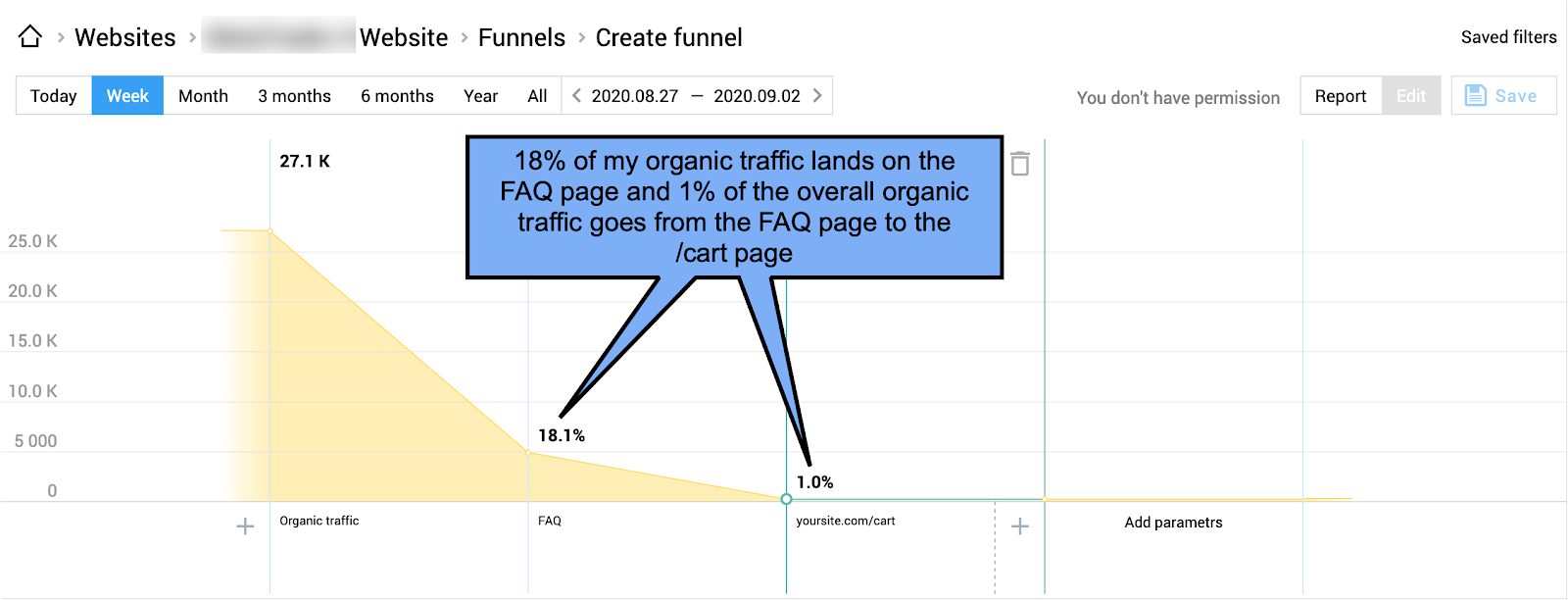
3. Monitor “People Also Ask” rankings
You’re most likely going to monitor this page traffic and its rankings anyway, but there’s one more thing to add here: “People Also Ask” positions.
As this page focuses on covering customers’ questions, Google’s “People Also Ask” positions are pretty indicative as to whether or not you’re doing a good job. SE Ranking is the only tool I’m aware of that can help you with that. It keeps track of most of Google’s search elements and reports your progress:
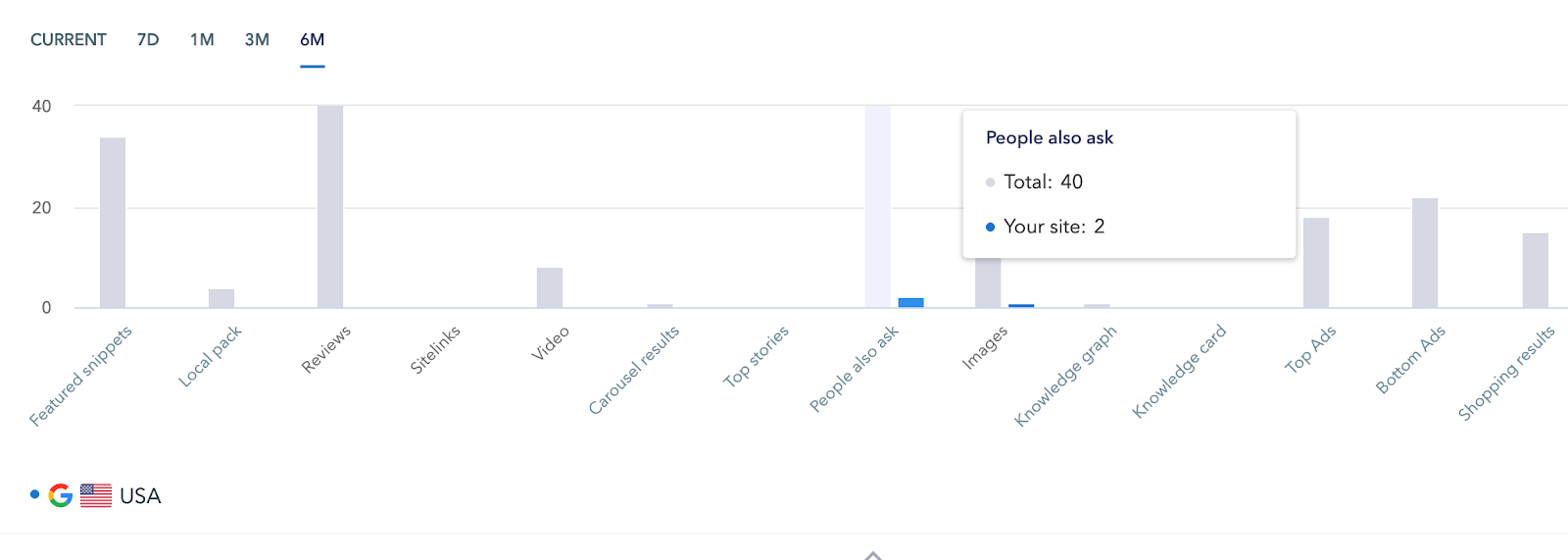
If you do things right, you’re likely to see your PPA positions growing.
4. Monitor customer feedback
Finally, collecting user feedback on every answer in your FAQ will help you create more helpful answers. Again, most pre-build FAQ solutions come with this option, but there are standalone plugins for it as well (like this one).

FAQ FAQs
There are a few common questions about building an FAQ page that keep floating the web (as well as Moz’s community forums). Let’s quickly address them here:
Is an FAQ section still a good idea?
Yes, by all means, but only if you take it seriously.
Should I employ “collapsible” answers to save space?
I don’t have any issues with this set-up (many brands choose to go this way), but SEOs believe that content hidden behind tabs or clicks holds less value than immediately-visible content.
Can I re-use select answers on other pages where these questions-and-answers make sense? Is this duplicate content?
It isn’t a “problematic” duplicate content issue (meaning Google will not penalize for that), but the best way to avoid duplicate content is to write new (original) answers for each page.
Should it be one page, or is it better to set up a multi-page knowledge base?
Depending on how much you have to say, either way is good.
Takeaways
- Your FAQ page is an important step in the buying journey and a good organic search asset that can both bring and convert traffic.
- To find answers to cover on your FAQ page, read our niche question research guide.
- Create concise, factual answers that will provide immediate help or guidelines. Videos and animated GIFs always make the FAQ section more helpful.
- Link from your FAQ page to accommodate different user intents and help your site users continue their journey through the site.
- Structure your FAQ page in a meaningful way to give site users some clues as to what is covered.
- Monitor your site user journeys through your FAQ page closely to improve and expand it.
Have more tips for optimizing your FAQ? Let me know in the comments section.
Sign up for The Moz Top 10, a semimonthly mailer updating you on the top ten hottest pieces of SEO news, tips, and rad links uncovered by the Moz team. Think of it as your exclusive digest of stuff you don’t have time to hunt down but want to read!
![]()
The post How to Create a Useful and Well-Optimized FAQ Page appeared first on Local SEO Resources.
